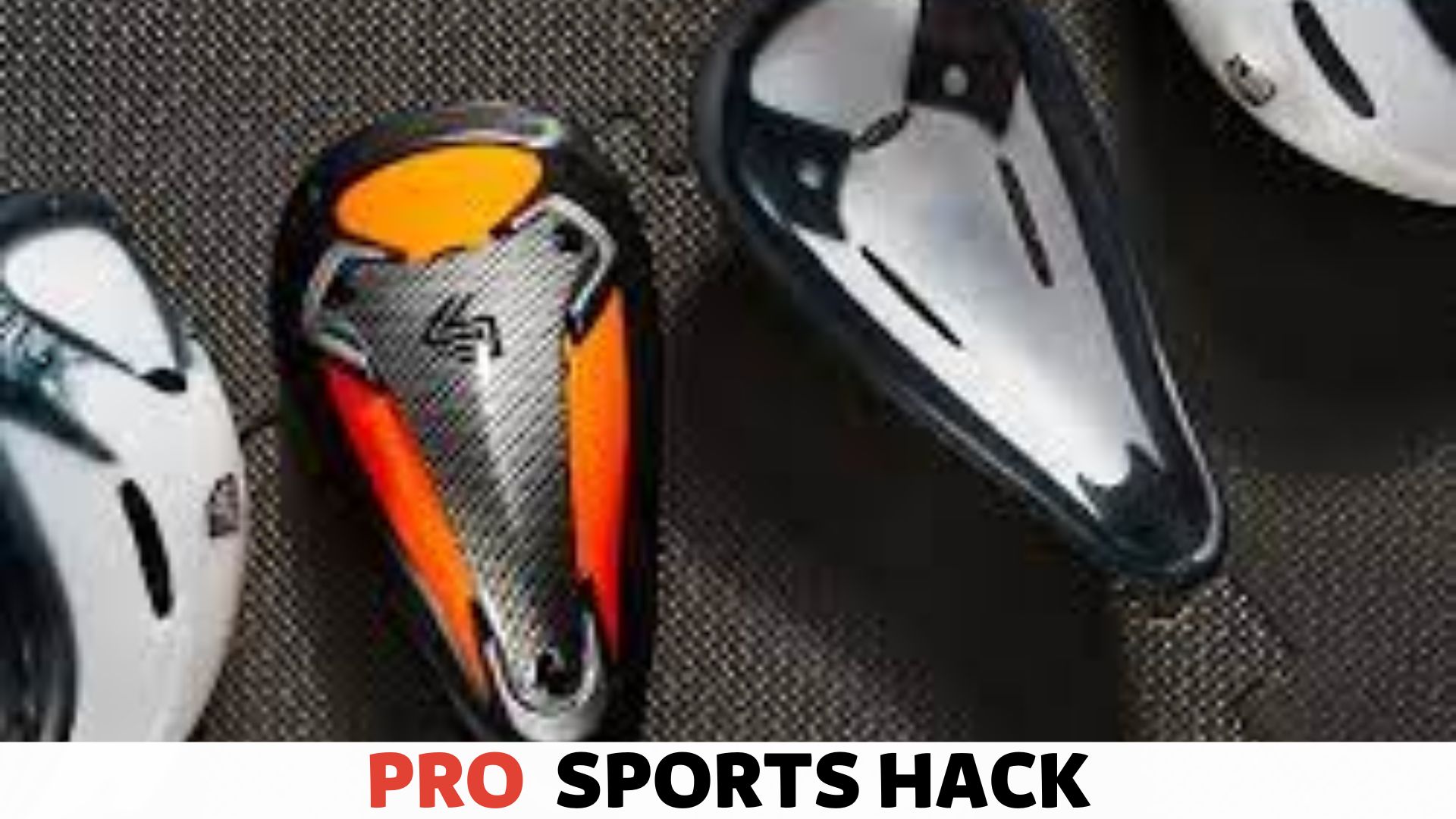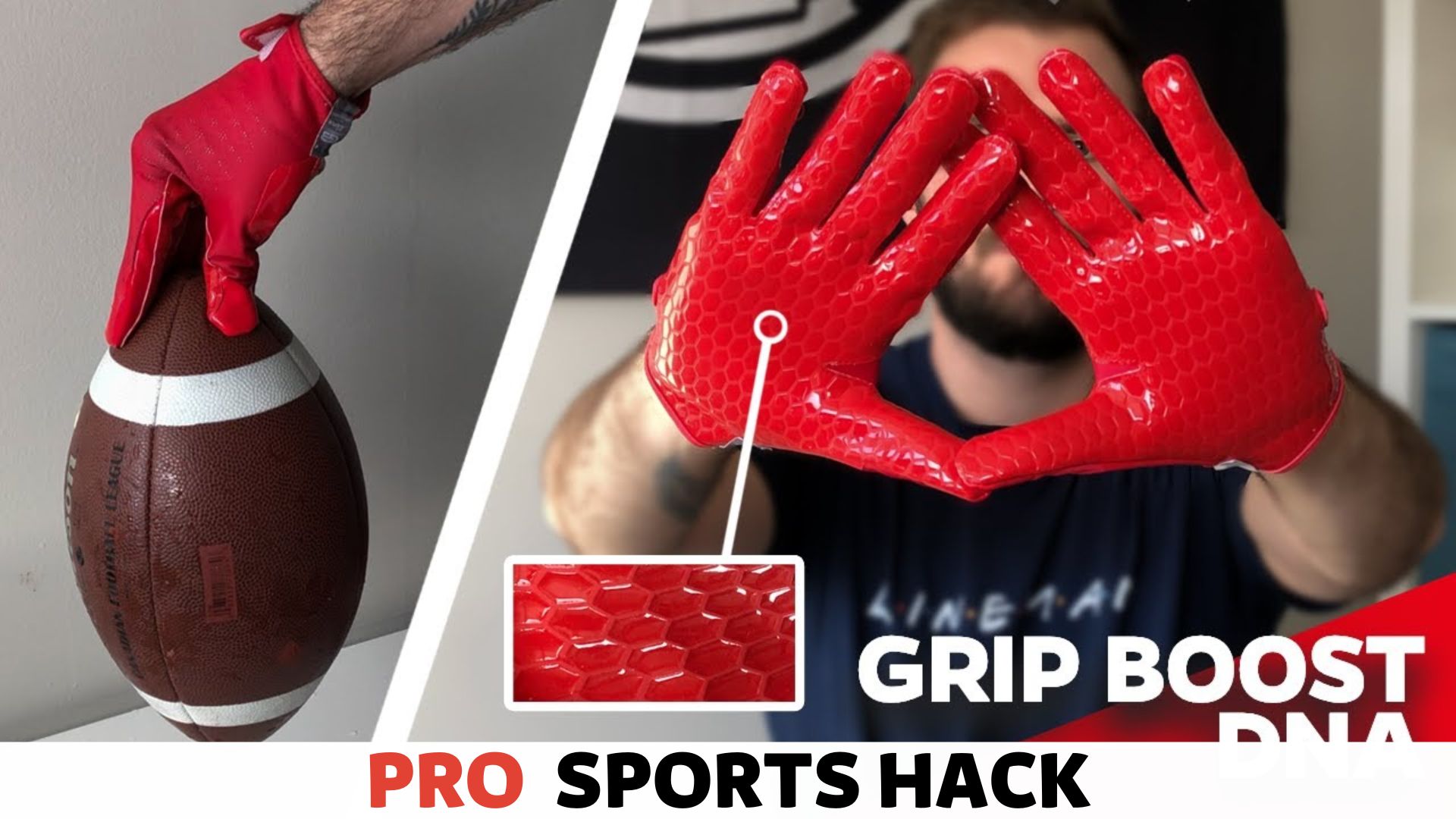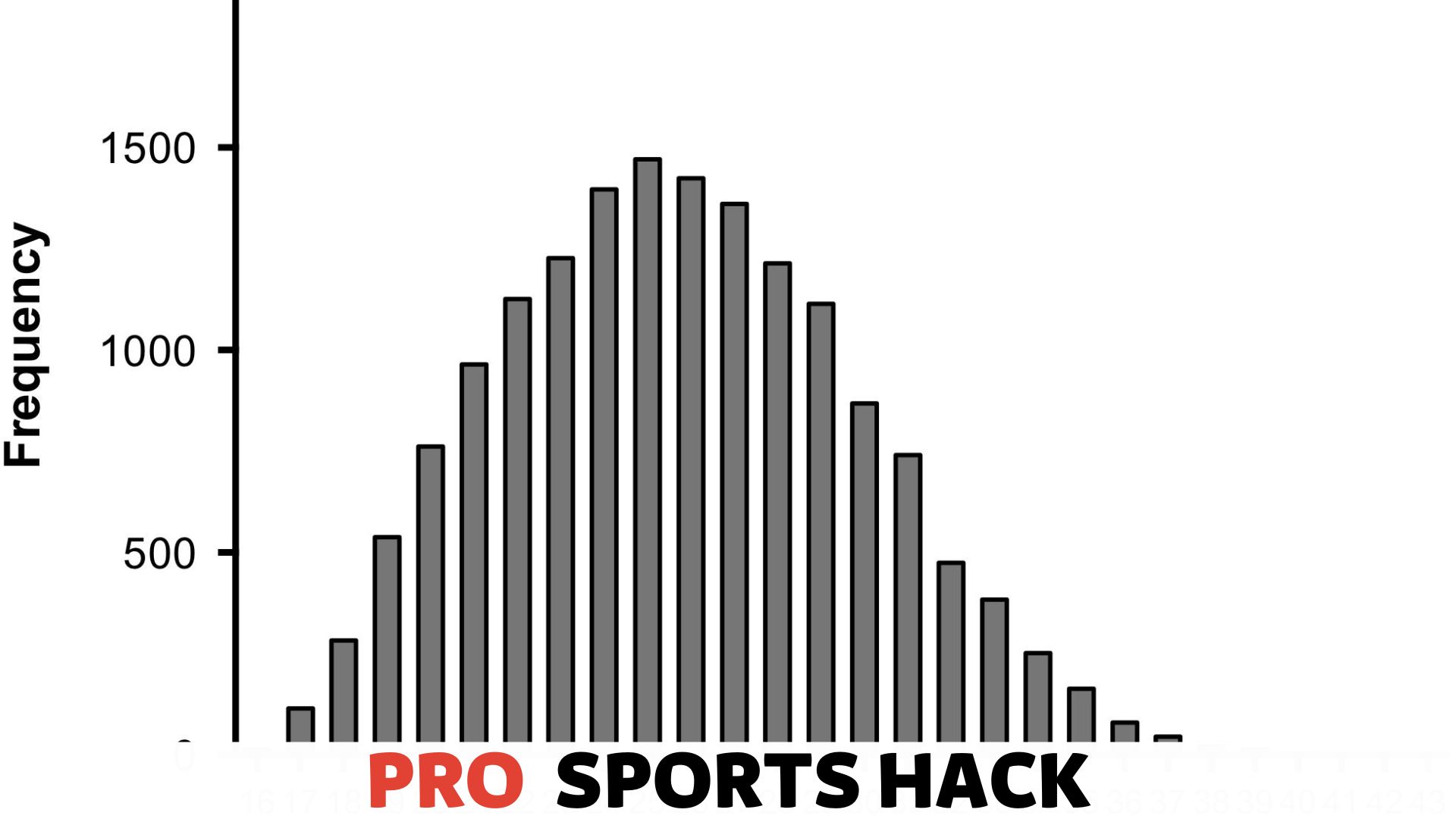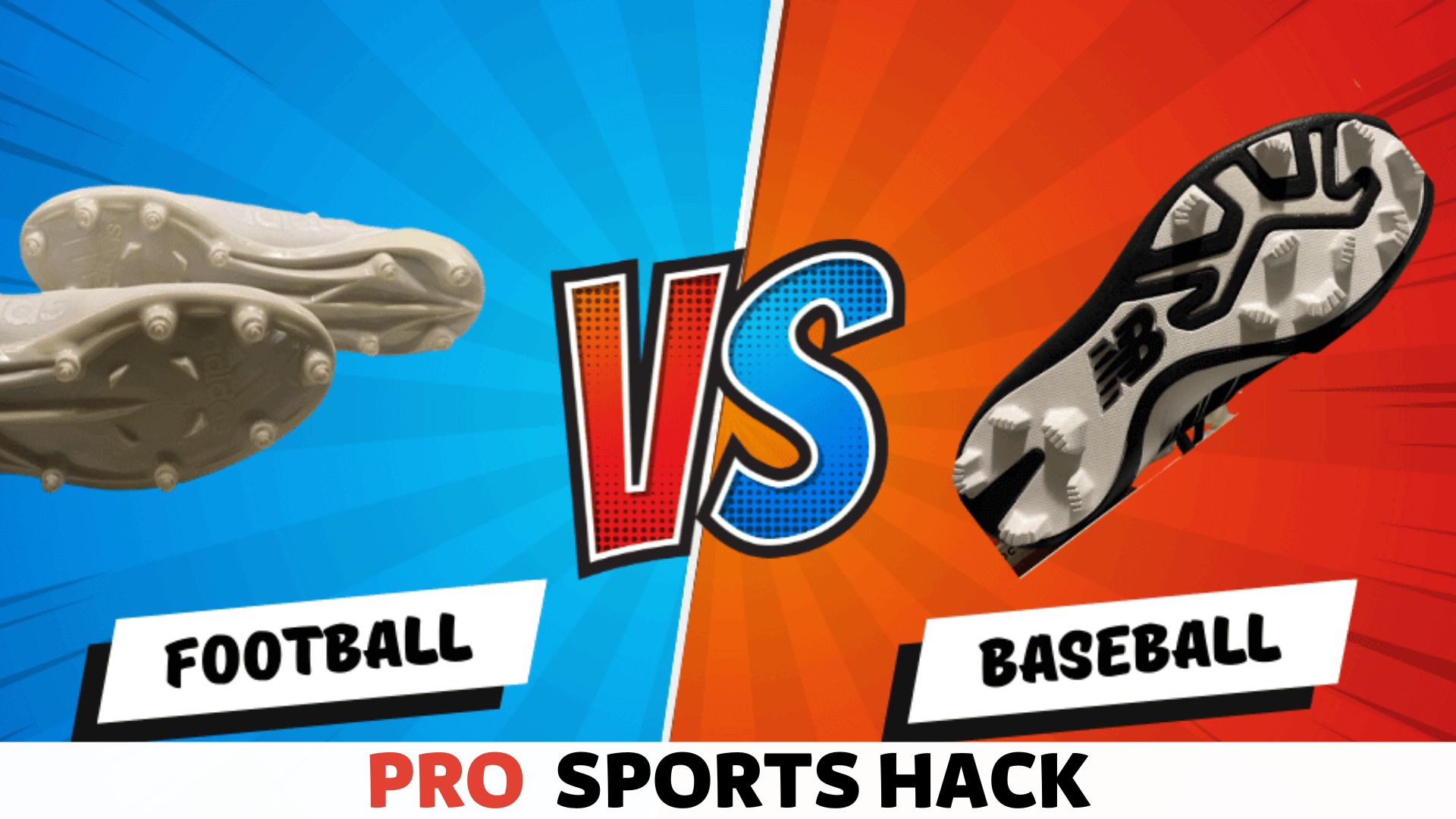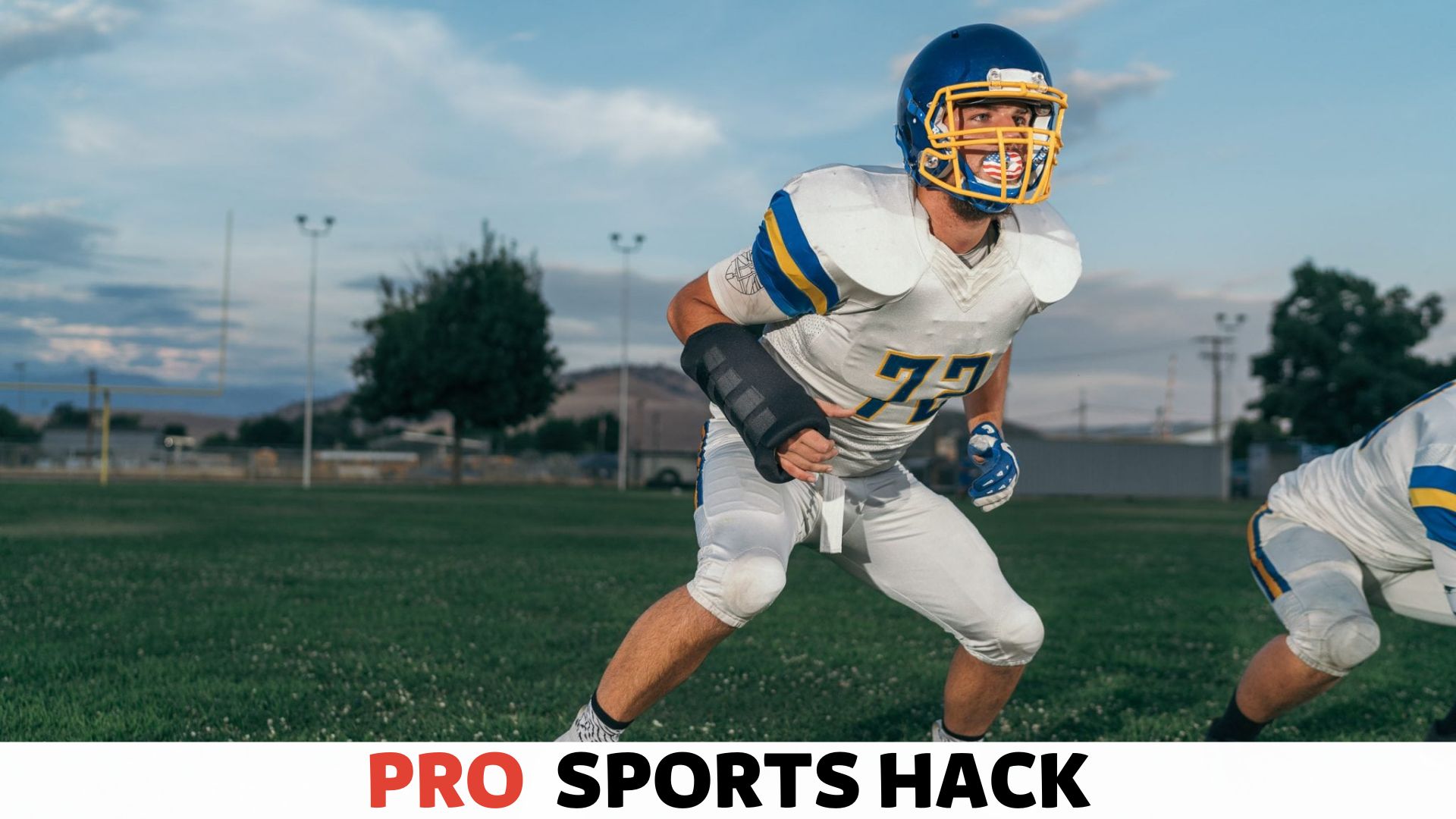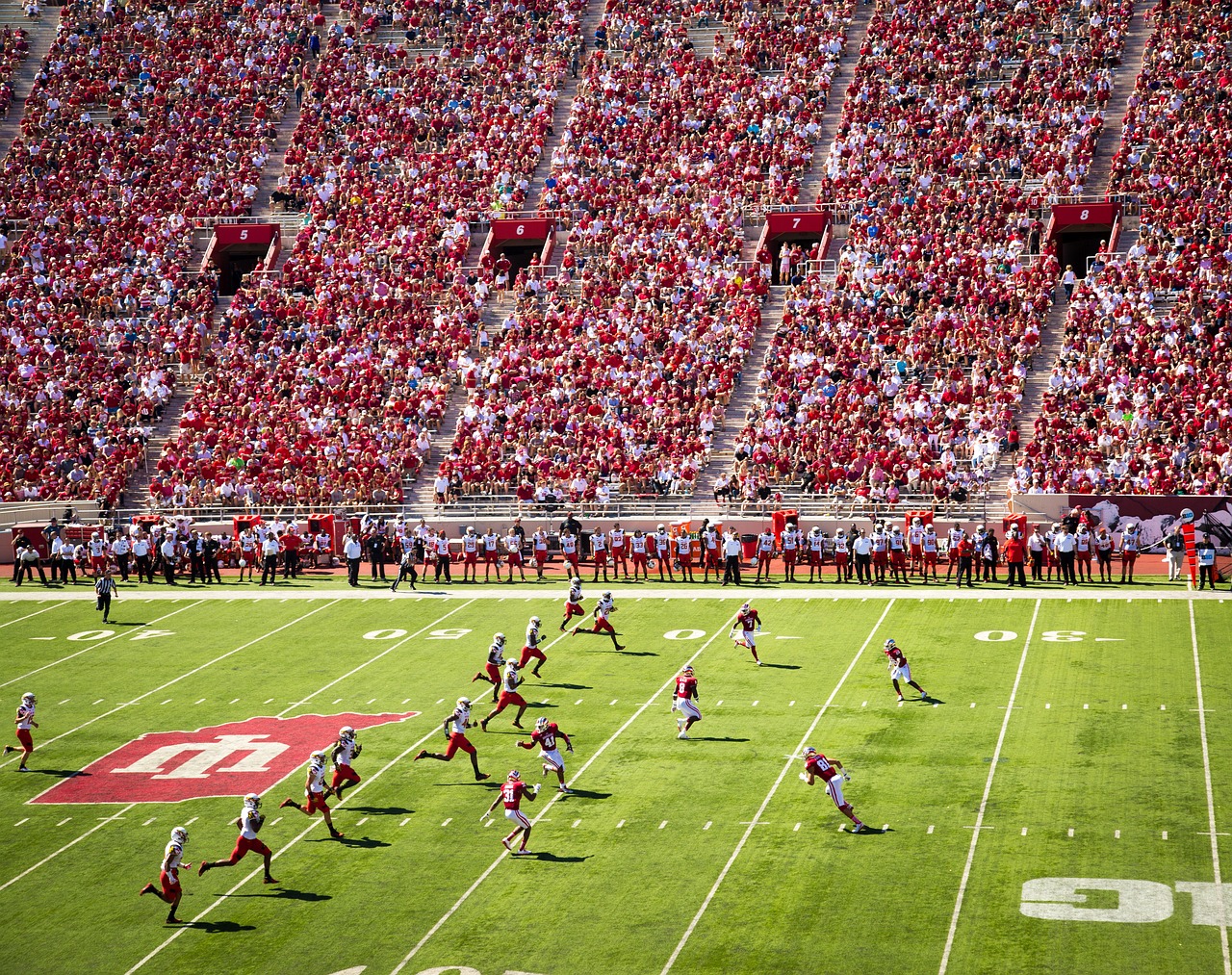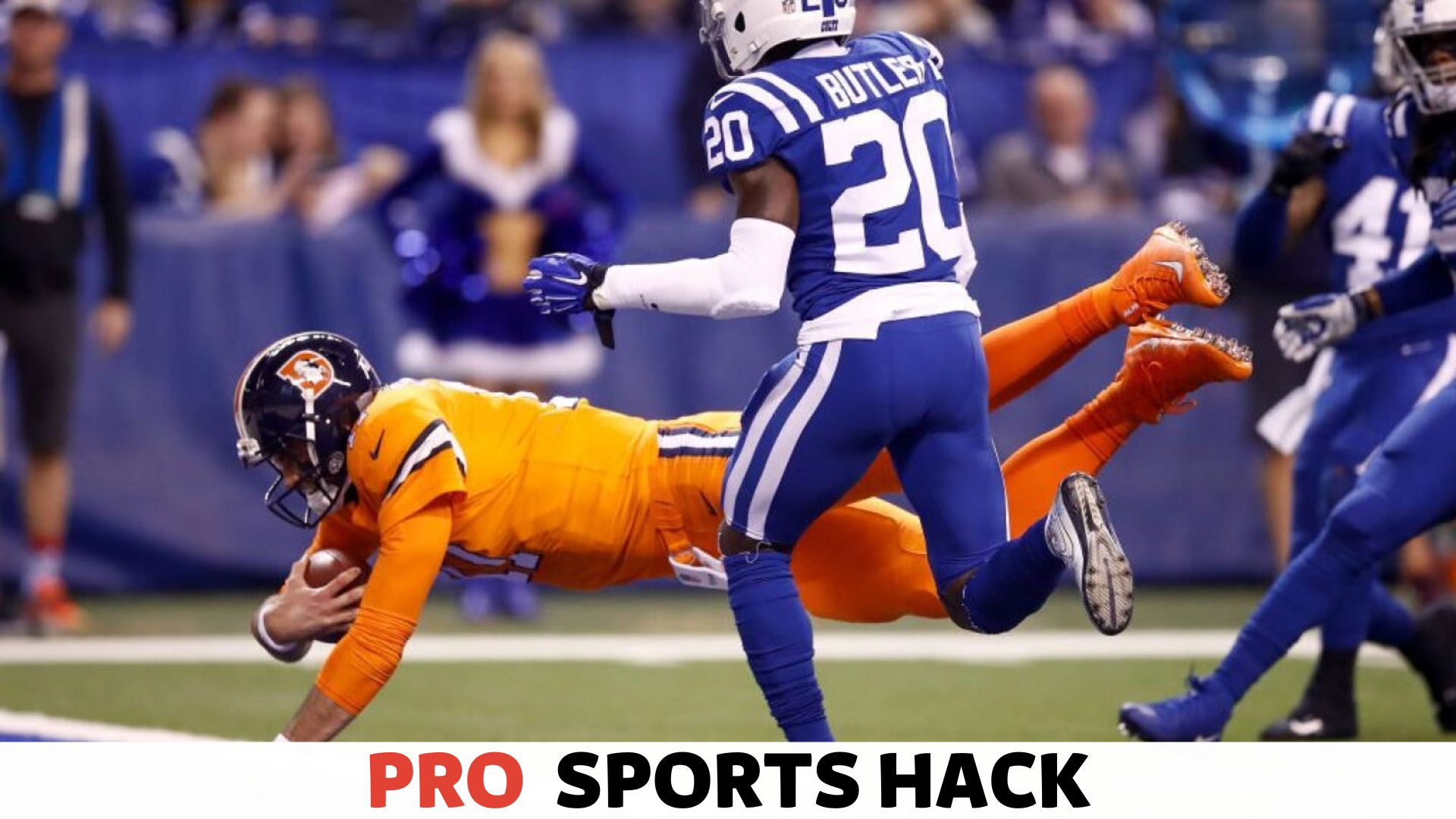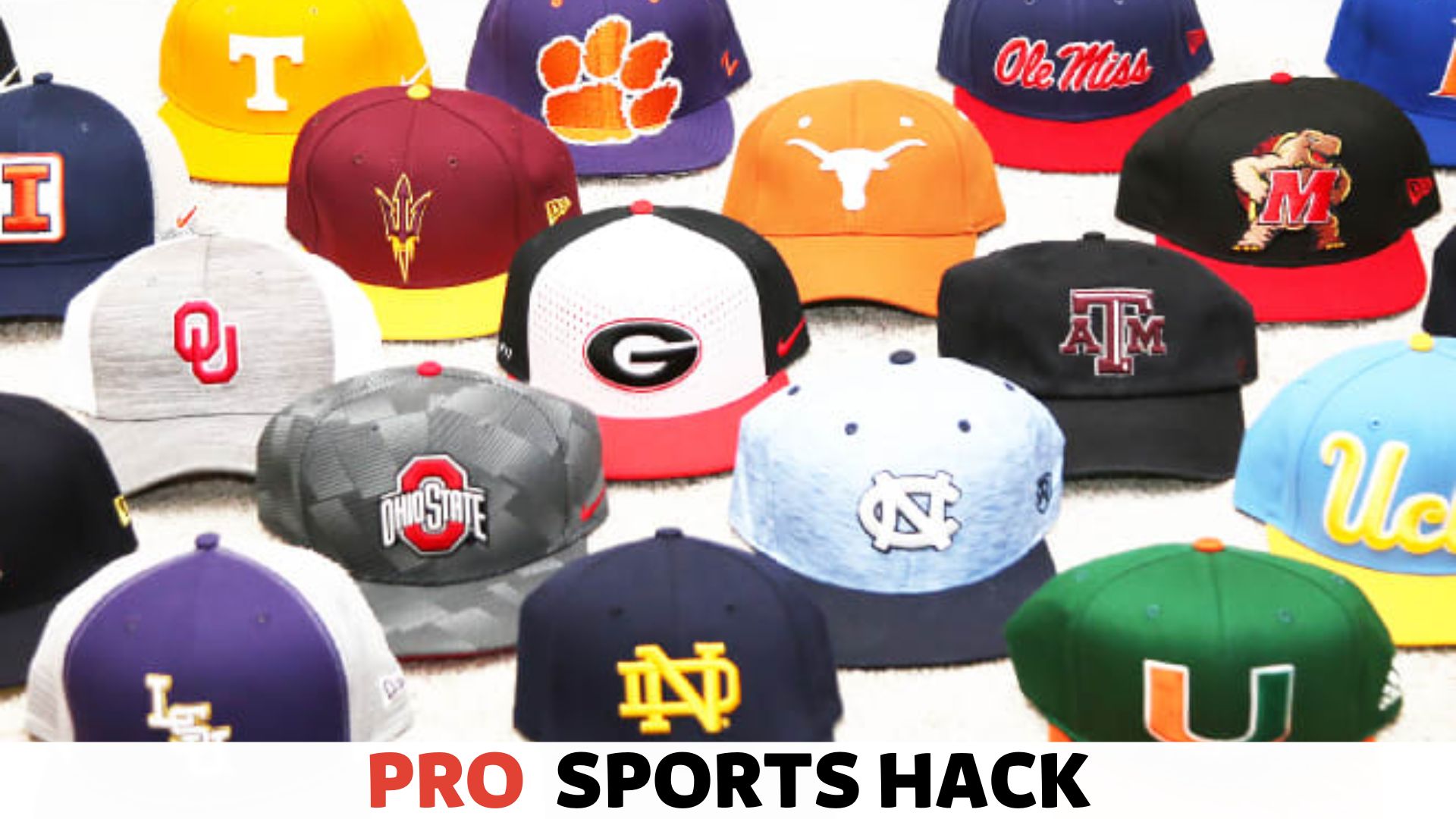
To break in football cleats, wear them for short periods during practice and gradually increase the duration as they become more comfortable.
Properly breaking in cleats ensures that they conform to the player’s feet, providing better traction and stability on the field. However, rushing this process can lead to blisters, discomfort, and decreased performance.
We will discuss the best practices to break in football cleats effectively and safely, allowing players to optimize their play and confidence on the field.
By following these expert tips, players can attain the perfect fit for their cleats, enhancing their overall performance and enjoyment of the game.
Importance of Properly Fitting Football Cleats
Impact on Performance and Safety
Properly fitting football cleats can make a significant impact on both your performance and safety on the field. When your cleats fit correctly, you can move more efficiently, change directions quickly, and maintain balance.
This means you’ll have greater control over your footwork, allowing you to perform better, whether cutting, pivoting, or sprinting.
Moreover, wearing cleats that fit properly can help to prevent injuries. Ill-fitting cleats can result in discomfort, blisters, and even more serious issues such as sprained ankles or foot fractures.
Choosing the right size and fit can reduce the risk of these injuries and keep you in the game.
Discover the answer to a common query in our post: Can football gloves be washed? We’ll provide valuable insights and tips to maintain the longevity of your sports gear.
Common Issues with Ill-Fitting Cleats
Wearing the wrong size or style of cleats can lead to various problems that can hinder your performance on the field. Here are a few common issues that arise when cleats don’t fit properly:
- Poor stability: Ill-fitting cleats can cause instability when running or making quick movements, increasing the likelihood of slips or falls.
- Blisters and discomfort: Shoes, either too tight or loose, can create friction, leading to painful blisters and general discomfort.
- Lack of support: When your cleats don’t fit properly, they may fail to provide adequate support to your feet, ankles, and arches. This can increase the risk of sprained ankles and other injuries.
- Reduced agility: If your cleats are too bulky or don’t allow your feet to move naturally, your agility and speed may be hampered, making it difficult to perform at your best.
Ensuring Properly Fitting Cleats
Now that we understand the importance of properly fitting cleats and the potential issues with ill-fitting ones let’s discuss how you can ensure you have the right pair:
- Measure your feet: Start by measuring your feet regularly to ensure you have the most accurate size. Remember, sizes can vary between brands, so always refer to the manufacturer’s sizing chart.
- Try them on: Visit a store and try on different cleats to find the right fit. Ensure there is enough room in the toe box for some wiggle room, but not so much that your foot slides around.
- Consider foot type: Everyone’s feet are different, so choose cleats that cater to your specific foot type. For example, individuals with high arches may require additional arch support.
- Break them in properly: Once you’ve found the perfect pair, gradually break them in. This can be done by wearing them around the house or during light practice sessions, allowing the materials to mold to your feet without causing discomfort.
By following these steps, you’ll be closer to finding football cleats that provide optimal performance, comfort, and protection.
Remember, your feet are your foundation on the field, so selecting the right cleats and ensuring they fit properly is crucial. Don’t overlook this vital aspect of your game; you’ll be ready to dominate on the gridiron.
How to Determine the Right Size
Measuring Your Foot Size Accurately
Before purchasing football cleats, measuring your foot size accurately is essential. This will ensure a comfortable and secure fit, allowing you to perform at your best on the field.
Here’s how you can measure your foot size:
- Start by standing barefoot on a piece of paper or a firm surface.
- Using a pencil or a marker, trace the outline of your foot, ensuring the pen is held perpendicular to the paper.
- Measure the length from the tip of your longest toe to the back of your heel. This measurement will be your foot length.
- To determine your foot width, measure the widest part of your foot.
By accurately measuring your foot size, you can choose the right size of football cleats that provide the perfect fit.
Trying on Different Brands and Styles
Once you have determined your foot size, trying on different brands and styles of football cleats is recommended. Each brand and style may have slight variations in fit, and finding the one that suits your foot shape and preferences is crucial for optimal performance.
Here are some key considerations when trying on different football cleats:
- Ensure you wear the same type of socks you plan to wear during games.
- Pay attention to any pressure points or discomfort while trying on the cleats.
- Walk around in the cleats to feel their comfort and support.
- Consider the overall fit of the cleats, including how snugly they grip your heel and midfoot and whether there is sufficient toe room.
By trying on different brands and styles, you can find the perfect pair of football cleats that feel like an extension of your feet.
Ensuring Proper Width and Arch Support
In addition to finding the right length and overall fit, it is essential to consider the width and arch support of the football cleats. These factors provide stability, prevent injuries, and enhance performance.
Here’s how to ensure proper width and arch support:
- Check if the width of the cleats provides enough space for your foot without being too tight or loose.
- Consider cleats with adjustable lacing systems or straps that customize the fit according to your foot width.
- Look for cleats with adequate arch support that matches the natural curve of your foot.
- Use specialized insoles or orthotics to enhance arch support and comfort if needed.
By ensuring proper width and arch support in your football cleats, you can minimize the risk of discomfort or injuries and maximize your performance on the field.
Why Breaking in Your Cleats is Important?
Breaking in your football cleats is an essential step that every player should take before hitting the field. Properly breaking in your cleats can improve your performance, comfort, and overall game.
In this section, we will explore the importance of breaking in your cleats and its benefits. Let’s dive in!
Enhancing Comfort and Fit
One of the main reasons why breaking in your football cleats is crucial is to enhance comfort and fit. When you purchase new cleats, they may feel stiff and tight around your feet. This can result in discomfort and even pain during practices and games.
By breaking in your cleats, you allow the materials to stretch and mold to the shape of your feet, resulting in a more comfortable and snug fit.
Breaking in your cleats also allows you to address specific areas that may be causing discomfort.
For example, if you feel pressure points or irritation around the toes or heel, wearing your cleats gradually helps to alleviate these issues by softening the material in those areas.
In the pursuit of a better game, learn the secrets on how to make a football softer – a crucial aspect for enhanced playability that every football enthusiast should know.
Reducing the Risk of Blisters and Injuries
Another significant benefit of breaking in your football cleats is reducing the risk of blisters and injuries.
When you wear new cleats for extended periods without properly breaking them in, the friction between your feet and the shoes can lead to painful blisters. These blisters can sideline you and affect your performance on the field.
Moreover, wearing stiff and unbroken cleats increases the chances of foot and ankle injuries. The lack of flexibility and proper fit can result in strains, sprains, and even more severe injuries.
Taking the time to break in your cleats properly allows your feet and ankles to adjust to the shoes’ design and movements, minimizing the risk of injury.
Improving Agility and Responsiveness
When you break in your football cleats, you also enhance your agility and responsiveness on the field. As the materials soften and adapt to your feet, they allow for better movement and quick changes in direction.
This increased agility can distinguish between reaching the ball first or missing a crucial play.
The snug fit provided by well-broken-in cleats enhances your footwork and responsiveness. With the shoe comfortably hugging your feet, you gain better control and precision in your movements, improving your overall performance on the field.
In conclusion, breaking in your football cleats is essential for various reasons. It enhances comfort and fit, reduces the risk of blisters and injuries, and improves agility and responsiveness.
Taking the time to break in your cleats properly will undoubtedly pay off in your performance and overall enjoyment of the game.
So lace up, hit the field, and dominate with confidence in your perfectly broken-in cleats!
Step-By-Step Guide to Breaking in Cleats
Are you excited to hit the field with your new football cleats but worried about the uncomfortable break-in process? Don’t worry. We’ve covered you with a step-by-step guide to help you break in your cleats effectively.
Following these simple tips and techniques, you can mold your new shoes to fit your feet perfectly, ensuring maximum comfort and performance on the field.
Gradual Break-In Process
The first step in breaking in your football cleats is to start with a gradual break-in process. Instead of jumping into intense practice or game situations, give your feet time to adjust to the new shoes.
Begin by wearing them around the house for short periods to allow your feet to get accustomed to the fit and feel of the cleats.
This will help prevent blisters and discomfort when you finally start wearing them in more demanding situations.
Wearing Them Around the House
When wearing your new cleats around the house, pay attention to tight or uncomfortable areas. During the break-in process, you can use this time to identify any potential problem areas needing extra attention.
This step will also help the shoes gradually mold to your feet, making them more comfortable.
Slowly Increasing Usage During Practice
As you gradually break in your cleats, slowly increasing their usage during practice sessions is essential. Start by wearing them for a shorter duration, and then gradually increase the time as your feet become more comfortable.
Doing this allows your feet and the shoes to adapt to each other at a pace that won’t cause excessive discomfort or pain.
Targeted Stretching Techniques
In addition to gradual usage, targeted stretching techniques can help break in your football cleats. Focus on stretching the specific areas of the shoes that feel tight or constricting.
You can use your hands to gently stretch these areas or even wear them with thick socks to help expand the material. This will help alleviate any tightness and ensure a better fit.
Utilizing Conditioning Products
Another effective way to break in your football cleats is by utilizing conditioning products specifically designed for sports shoes. These products help soften and condition the material, making it more pliable and comfortable.
Follow the manufacturer’s instructions and regularly apply the conditioner to your cleats to expedite the break-in process.
Now that you have a step-by-step guide to breaking in your football cleats, you can ensure your new shoes fit like a glove before hitting the field.
Remember to always listen to your feet and adjust the break-in process accordingly. By following these tips and being patient, you’ll enjoy properly broken-in cleats’ comfort and performance benefits.
Ensure the longevity of your cherished leather football by mastering the art of how to clean a leather football. Our step-by-step guide will help you keep your prized possession in top condition.
Warm-Up Activities for Quick Break-In
Dynamic Stretching Exercises
Dynamic stretching exercises are a great way to warm up your muscles and prepare them for quick break-in. These exercises involve moving parts of your body through a full range of motion, activating the muscles, and increasing blood flow.
Here are a few dynamic stretching exercises to help you break in your football cleats:
- Leg Swings: Stand next to a wall or a sturdy object and swing one leg forward and backward in a controlled manner. This exercise helps to loosen up your hips and hamstrings.
- High Knees: While standing, lift one knee towards your chest and alternate between legs as if running in place. This exercise engages your quadriceps and hip flexors.
- Lunge with a Twist: Take a step forward with your right foot into a lunge position. As you lower the lunge, twist your torso towards the right, reaching your right arm towards the ceiling. Repeat on the other side. This exercise helps to loosen up your hips, groin, and thoracic spine.
Foot Strengthening Exercises
Strong feet are essential for breaking in football cleats effectively. These foot-strengthening exercises can help improve stability and reduce the risk of injuries:
- Toe Walking: Walk on your tiptoes for a certain distance or time, engaging the muscles in your feet and calves.
- Toe Flexes: Sit on a chair and place a towel on the floor before you. Use your toes to scrunch up the towel towards you, then release it. Repeat this exercise for a few sets.
- Ankle Circles: Sit on the floor with one leg extended before you. Rotate your ankle in clockwise and counterclockwise circles, focusing on the full range of motion.
Agility Drills
Incorporating agility drills into your warm-up routine can be highly beneficial to ensure quick break-in of your football cleats. These drills improve your footwork, speed, and reaction time. Here are a few agility drills to consider:
- Shuttle Runs: Set up two cones or markers about 10 yards apart. Sprint from one cone to the other and back as fast as possible, repeating the process multiple times. This drill helps improve acceleration and change of direction.
- Ladder Drills: Set up an agility ladder on the ground and perform various quick footwork exercises, such as high knees, lateral shuffles, and quick hops. These drills enhance coordination and agility.
- Cone Drills: Place cones in different formations, such as a square or an ‘X’ shape. Navigate through the cones using quick steps, side steps, and backward movements. These drills simulate real game scenarios and improve your agility on the field.
By incorporating these warm-up activities into your routine, including dynamic stretching exercises, foot strengthening exercises, and agility drills, you can effectively break in your football cleats quickly and maximize your performance on the field.
Techniques for Stretching Football Cleats
When it comes to playing football, having properly fitting cleats is essential for performance and preventing injuries. However, new cleats can sometimes be too tight or uncomfortable, especially when breaking them in.
In this section, we’ll explore some effective techniques for stretching football cleats. Whether you’re using a shoe stretcher, applying heat to loosen the material, or using targeted stretching with socks or foam inserts, these methods will help you achieve the perfect fit without compromising the integrity of your cleats.
Using a Shoe Stretcher
If you find your football cleats excessively tight, using a shoe stretcher is an excellent option for expanding the width and length of the shoe. A shoe stretcher is a device designed to apply gentle pressure to stretch the material of the cleats.
Here’s how you can use a shoe stretcher:
- Insert the shoe stretcher into your football cleats, ensuring it fits snugly.
- Turn the stretcher’s adjustment knob clockwise to expand it gradually.
- Leave the stretcher in the cleats for a few hours or overnight to allow the material to stretch.
- After removing the stretcher, try on the cleats to see if they fit more comfortably.
- If necessary, repeat the process until you achieve the desired fit.
Applying Heat to Loosen the Material
Another effective technique for stretching football cleats is applying heat to loosen the material. Heat helps the material become more flexible, making it easier to stretch.
Here’s how you can do it:
- Preheat your oven to a low temperature, around 200°F (93°C).
- Place your cleats on a baking sheet lined with parchment paper.
- Insert the baking sheet into the oven for 3-5 minutes, allowing the heat to warm the cleats.
- Wearing protective gloves, remove the cleats from the oven.
- While the material is still warm, put on the cleats and walk around for a few minutes to let them conform to your feet.
- As the cleats cool down, they will retain the stretched shape.
Targeted Stretching With Socks or Foam Inserts
Targeting stretching with socks or foam inserts can help if you prefer a more controlled stretching method. This technique allows you to focus on specific areas of discomfort or tightness.
Here’s how you can use socks or foam inserts to stretch your football cleats:
- Wear thick socks or insert foam inserts in the areas that feel too tight.
- Put on your football cleats and lace them up as you normally would.
- The pressure from your feet, socks, or foam inserts will help stretch the material in those areas.
- Walk or do light exercises in the cleats to gradually break them in.
- Repeat this process over time until you achieve the desired fit and comfort.
By using these effective techniques for stretching football cleats, you can ensure a more comfortable fit and enhanced performance on the field.
Be patient and allow the cleats to adjust gradually, whether using a shoe stretcher, applying heat to loosen the material, or targeted stretching with socks or foam inserts.
Remember, achieving the perfect fit is crucial for delivering your best performance while playing football.
Conditioning Products for Accelerated Break-In
Break-in periods for new football cleats can often be uncomfortable and cause blisters. However, conditioning products can help accelerate the process and make it more bearable.
Conditioning products such as leather conditioners and softeners, lubricants for reducing friction, and special padding socks can help make your new football cleats feel more comfortable and provide a better fit.
Let’s explore each of these options in detail.
Leather Conditioners and Softeners
Leather conditioners and softeners are excellent in softening the leather upper of your football cleats, making them more pliable and easier to break in.
These products help prevent the leather from becoming stiff or cracking, enhancing the overall longevity of your cleats. To use a leather conditioner, apply a small amount to a damp cloth and gently rub it onto the surface of the cleats.
Allow the conditioner to be absorbed before wiping off any excess. Repeat this process a few times to gradually improve the flexibility and comfort of your cleats.
Lubricants for Reducing Friction
Lubricants are another great option for breaking in your football cleats faster. They reduce friction between your feet and the cleat’s interior lining, preventing blisters and discomfort.
There are specialized lubricants available that are designed specifically for sports shoes, including football cleats. To apply the lubricant, spray a small amount into the interior of the cleats and gently spread it around with your fingers.
Focus on areas prone to friction, such as the heel and sides of the cleats. This will help create a smoother surface and reduce discomfort during the break-in period.
Socks with Special Padding or Cushioning
Socks with special padding or cushioning are designed to provide extra comfort and support while wearing your football cleats. These socks often feature extra layers of cushioning in the heel, toe, and other high-impact areas, helping to absorb shock and reduce the risk of blisters.
They also help to create a more snug and secure fit, preventing excessive movement within the cleats. When choosing socks, look for ones specifically designed for sports and have moisture-wicking properties to keep your feet dry throughout the game.
By wearing these specialized socks, you can enjoy a more comfortable and pain-free break-in period for your football cleats.
Cleat Maintenance Tips
Proper maintenance of your football cleats is essential to ensure their longevity and performance on the field. Following a few simple tips, you can keep your cleats in top shape, allowing you to focus on your game.
Proper Cleaning After Use
After each game or practice session, cleaning your football cleats thoroughly is important. This will remove dirt and grime and prevent the buildup of bacteria and odors.
To clean your cleats:
- Remove excess dirt and mud by gently brushing them off with a soft-bristle brush.
- Fill a basin with warm water and add a small amount of mild soap.
- Using a sponge or cloth, carefully wipe down the entire surface of the cleats, including the upper, sole, and laces.
- Rinse off the soap with clean water.
- Allow the cleats to air dry naturally, away from direct sunlight or heat sources.
Storage to Prevent Damage
Proper storage of your football cleats is vital to prevent damage and maintain their shape.
Here are a few guidelines for storing your cleats:
- Clean your cleats, as mentioned earlier, before storing them.
- Avoid leaving them in damp or humid environments, leading to mold and fungus growth.
- Store them in a cool, dry place, away from direct sunlight and extreme temperatures.
- You can use a shoe bag or box to protect them from damage.
Inspection for Wear and Tear
Regularly inspecting your football cleats is essential to identify any signs of wear and tear. You can address potential issues promptly and prevent further damage by spotting them early.
Follow these steps when inspecting your cleats:
- Check the upper material for any signs of cracks, tears, or loose threads.
- Examine the sole for wear patterns or uneven tread, as this can affect your grip on the field.
- Inspect the laces and eyelets to ensure they are intact and functioning properly.
- Consider repairing or replacing your cleats to avoid potential injury if you notice any significant damage.
By following these cleat maintenance tips, you can extend the lifespan of your football cleats and ensure they remain in optimal condition.
Taking care of your cleats will enhance your performance on the field and save you money in the long run by avoiding frequent replacements.
Extending the Lifespan of Your Cleats
Football cleats are an essential piece of equipment for any player on the field. They provide the traction and stability needed to perform at your best. However, like any sports gear, football cleats are subject to wear and tear.
To maximize your investment and ensure optimal performance, taking care of your cleats and extending their lifespan is crucial. Here are a few key tips to help you do just that.
Rotating Multiple Pairs
One of the best ways to prolong the life of your football cleats is to rotate multiple pairs. By doing so, you allow each pair to rest and recover between uses, reducing the overall wear and tear on any one pair.
Additionally, rotating your cleats helps to minimize odor and prevent the growth of bacteria, keeping your feet fresh and free from discomfort.
Consider investing in at least two football cleats, especially if you play or practice frequently. This simple tactic could significantly extend the longevity of each pair.
Avoiding Excessive Use of Hard Surfaces
Football cleats are designed for use on grass or turf surfaces, which offer better shock absorption and reduce stress on your feet and cleats.
Excessive use on hard surfaces like asphalt or concrete can cause premature damage to the studs and spikes, resulting in reduced traction and stability.
Avoid wearing your cleats on hard surfaces, and opt for grass or turf fields whenever possible. By doing so, you can help preserve the integrity of your cleats and ensure they last as long as possible.
Replacing Worn-out Parts
Over time, certain parts of your football cleats may start to show signs of wear and tear. It’s important to regularly inspect your cleats for any damage, such as worn-out studs or loose spikes.
When necessary, replace these worn-out parts promptly to maintain the performance and safety of your cleats. Many football cleats come with replaceable components, making keeping them in optimal condition easy and affordable.
Remember, a well-maintained pair of cleats can make all the difference in your game.
By following these tips and taking a proactive approach to care for your football cleats, you can extend their lifespan and maximize your investment.
Rotating multiple pairs, avoiding excessive use on hard surfaces, and replacing worn-out parts are simple yet effective strategies to ensure your cleats stay in top shape. Take care of your cleats, and they will take care of you on the field.
Importance of Investing Time in Breaking in Cleats
Investing time in breaking in football cleats is essential for every player, regardless of skill level.
Breaking in cleats involves wearing them and allowing them to adapt to the shape of your feet, ensuring a personalized fit that maximizes both comfort and performance.
Although breaking in cleats might seem tedious, its benefits, in the long run, make it an investment worth making.
Long-term Benefits for Performance and Durability
Regarding football cleats, performance and durability are two factors that can greatly impact a player’s overall game. Investing time in breaking in cleats sets the foundation for long-term benefits in both aspects.
Properly breaking in your cleats allows the shoe material to mold to the contours of your feet, providing a customized fit that enhances your performance on the field.
This personalized fit helps to prevent discomfort, blisters, and hot spots that could otherwise distract you from giving your best performance.
Moreover, breaking in cleats gradually softens the materials, allowing them to flex and move with your feet more naturally. This increased flexibility enhances your agility and maneuverability and reduces the risk of shoe-related injuries, such as strain or sprain.
Additionally, breaking in cleats contributes to their durability. When shoes are worn and stretched during the break-in process, it helps to eliminate any tight or constricting areas.
This reduces the chances of the shoe tearing or experiencing premature wear and tear during intense gameplay. A well-broken-in pair of cleats can last longer, saving you money in the long run.
Personalizing the Fit for Maximum Comfort
Comfort is crucial when it comes to football cleats. Ill-fitting shoes hinder your performance and can lead to foot-related issues affecting your overall well-being.
Breaking in your cleats allows you to personalize the fit, ensuring maximum comfort during those long hours on the field.
As you break in your cleats, the materials gradually adjust to the shape and contours of your feet. This process alleviates pressure points and creates a snug fit that supports your feet properly.
The customized fit ensures that your cleats do not slip or rub against your skin, reducing the risk of blisters and discomfort that can distract you from the game.
In addition, breaking in your cleats allows you to identify any areas requiring additional adjustments. This could include specialized insoles or lacing techniques for extra support or padding.
By personalizing the fit, you can optimize your performance and prevent any potential foot problems that could sideline you from the game.
In conclusion, investing time in breaking in football cleats is an essential step that brings long-term benefits for performance and durability.
The process requires patience and ensures a customized fit that enhances comfort and minimizes the risk of foot-related issues. So, take the time to break in your cleats and reap the rewards on the field.
Frequently Asked Questions
Does Putting Your Cleats In Hot Water Help Break Them In?
Putting your cleats in hot water can help break them in.
How Can I Make My Football Cleats More Comfortable?
To make your football cleats more comfortable, follow these tips:
- Choose the right size and fit for your feet.
- Break in your cleats gradually before playing in them.
- Use cushioned insoles or inserts for added comfort.
- Make sure your cleats are clean and dry before wearing them.
How Do I Stop My Cleats From Hurting?
To stop your cleats from hurting:
- Wear thick socks to provide extra cushioning and reduce friction.
- Make sure your cleats fit properly to avoid pressure points and discomfort.
- Use blister pads or moleskin on areas prone to rubbing or blistering.
- Gradually break in your cleats by wearing them for shorter periods before longer activities.
How Can I Stretch My Cleats Fast?
To stretch your cleats fast, wear them with thick socks and walk around for a few hours each day.
How Long Does It Take To Break In Football Cleats?
Football cleats typically take around 2-3 weeks to properly break in and adjust to the shape of your feet.
Conclusion
Breaking in your football cleats is key to maximizing your performance on the field. By following these tips, you can ensure that your cleats are comfortable, supportive, and allow optimal agility.
Start by wearing them for short periods, gradually increasing the duration as your feet become accustomed to the fit.
Use a quality leather conditioner to soften the material and prevent blisters. Pay attention to hotspots or areas of discomfort, adjusting the lacing or using insoles if necessary.
Additionally, consider practicing with your cleats on different surfaces to break them further.
Remember, breaking in your football cleats may take time and patience, but the result is worth it. Finally, maintain your cleats properly to extend their lifespan.
Following these guidelines gives you the best chance of achieving peak performance and comfort on the football field.




![Cat in the Chrysalis Spoiler: All You Need To Know [Updated] Cat in the Chrysalis Spoiler](https://prosportshack.com/wp-content/uploads/2024/02/Cat-in-the-Chrysalis-Spoiler-100x75.jpg)







